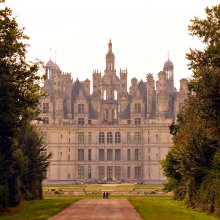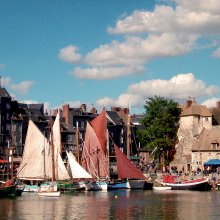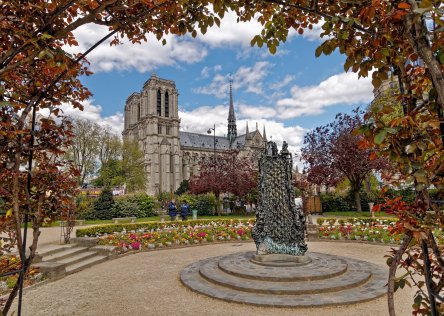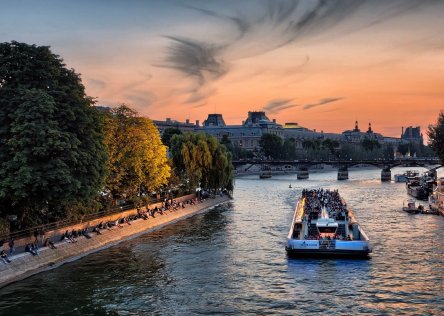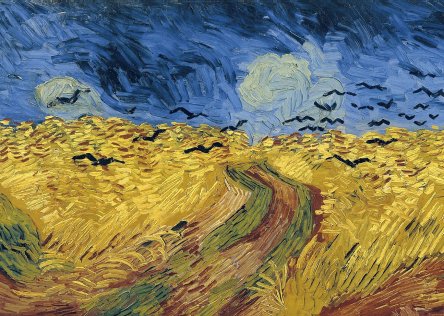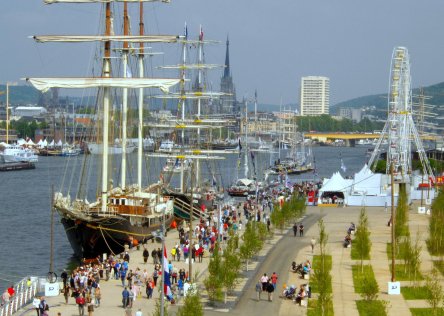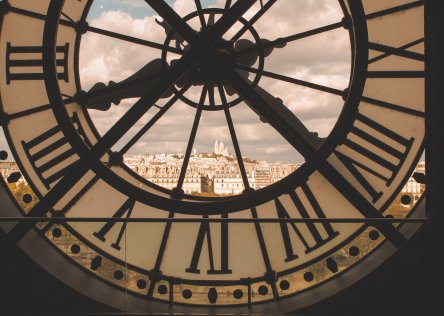Chambord Castle is located in the Loire Valley and has been a UNESCO world heritage site since 1981, welcoming hundreds of thousands of visitors each year. On March 20th 2017, the newly restored French gardens will open to the public for the first time.
This exciting new addition to the castle grounds was based on original drawings and years of architectural and archeological research. The gardens occupy six and a half hectares on the north side of the castle, and there are more than 600 trees, 800 shrubs, 200 rosebushes and 15,250 plants along the border. This is the largest garden project of its kind within the last 20 years, and this makes Chambord Castle an essential feature of any French gardens tour.

About 100 people worked on this amazing project - © Krzysztof Golik CC-BY SA 4.0
Chambord Castle: the jewel of the Loire Valley
Far from the hustle and bustle of the city, Chambord Castle emerges majestically from the surrounding forest, showing off its Renaissance style architecture. Some visitors may think it looks like something out of a Disney movie, and they would not be wrong, as this castle may have been the inspiration for the castle in Beauty and the Beast.
Located just two hours south of Paris, it is the largest and most prestigious of the French Renaissance châteaux. However, in the past many tourists would stop outside the castle just to take a picture and leave. The hope is that the new gardens will attract more visitors who will want to stop and explore the castle and gardens ‘as part of a majestic composition that combines wild, natural spaces (the park), manicured nature (the garden), and an exceptional architectural construction (the castle)’, according to the Chambord Castle website.
A brief history of Chambord Castle
To give a little background information on Chambord castle, it was the 16th century French King François I who ordered its construction to show off his wealth and power, and use it as his residence when he was hunting in the region. It took 28 years to build and the structure was completed in 1547. The design of some of its features, such as the double-spiral staircase, has been attributed to Leonardo Da Vinci, who traveled to France with the King on his return from Italy.
Due to its huge rooms which were difficult to heat, it was impractical as a long-term residence. It was therefore never fully furnished during King François’s reign. He only ever used it for short hunting visits and spent less than six weeks there in total. After François died in 1547, the castle was not used for almost a century. It was King Louis XIV who built the castle’s terrace in 1682 and installed the original landscaped garden in 1734.
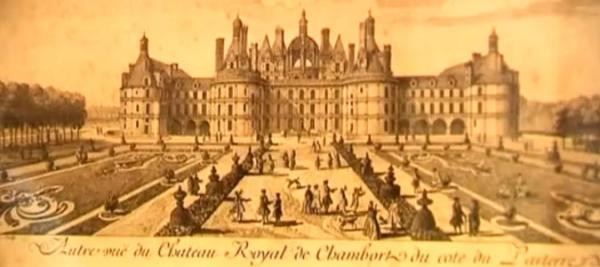
The castle changed hands several times during the following centuries, and after the French Revolution the gardens fell into disuse. They were finally reduced to a large lawn area in 1970.
The restoration of the gardens
Stephen A. Schwarzman - an American billionaire and self-confessed Francophile - had visited the site twice in the last few years. ‘There is no country more elegant than France,’ he says. ‘When I visited Chambord for the first time, I found that, in spite of its splendor, there was something missing. So when they approached me to help resurrect the castle’s French gardens, I said yes straightaway. It will make Chambord even more beautiful and this will be great for tourism. It will be a boost for the region and France in general.’

Details work in Chambord gardens - ©Chambord
Schwarzman donated $3.6 million dollars to this important heritage project. All of the original flowerbeds have been restored and visitors will be able to stroll freely through the gardens which link the castle with the nearby forest. Here you will have the chance to visit the ponds and prairies of the largest enclosed nature reserve in Europe. Watch out for wild deer and boars!

Stephen A. Schwarzman - ©Chambord
Beyond Chambord Castle
We highly recommend visiting the other castles and gardens in the Loire Valley. The Château Chenonceau was also built in the 16th century with a mixture of late Gothic and early Renaissance architectural features. The absolutely stunning Renaissance gardens at the Château de Villandry include a water garden, ornamental flower gardens, and vegetable gardens.
If you are planning a garden tour of France, you will not want to miss the restored 18th-century Italian Renaissance garden and topiary garden at the Eyrignac Manor, or the Marqueyssac Castle gardens, both in the Dordogne region. Head south to the French Riviera and visit the remarkable gardens at the Villa Ephrussi de Rothschild. You can then head east along the coast and across the border to the Exotic Garden of Monaco.
Tours
Check out our tours of the Loire Valley and experience the magic and history for yourselves! We will provide you with your own personalized guidebook to help you make the most of your trip.
Keep an eye out for our blog post on the best gardens in France, coming soon!


